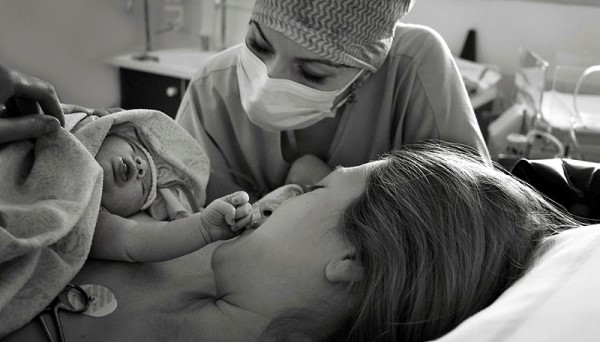

What is the midwife-led continuity of carer model?
This model of maternity care provides a way for expectant parents to receive dedicated support from the same midwife or a ‘buddy’ (back up) midwife throughout the antenatal and perinatal period. Parents can build a relationship with their midwife, and evidence suggests this improves outcomes with fewer interventions needed in labor. It provides a more positive experience overall and increases the likelihood of a woman being satisfied with the care received.
Why is the model needed today?
In 2016, it was identified that nationally the quality and safety of maternity care needed to be improved. By the end of March 2021, all Local Maternity Systems were expected to implement Better Births and provide continuity for most women, raising the standards of care provided in maternity units across England.
How has the model been implemented in Bradford?
In 2017, Better Start Bradford (funded by The National Lottery Community Fund) commissioned Bradford Teaching Hospitals NHS Foundation Trust to trial a midwife-led continuity of carer model of maternity care, delivered alongside traditional maternity care. All pregnant women living in the three wards covered by Better Start Bradford (Bowling and Barkerend, Bradford Moor and Little Horton) were eligible. The model was introduced in this area as part of a wider program, aiming to support vulnerable families from pregnancy up to their child’s fourth birthday by helping them to create positive foundations for the child as they grow older. Bradford has an infant mortality rate of almost double the rate of England (6.6 per 1,000 children versus 3.9 per 1,000, respectively), with rates being particularly high in Bradford City at 24 per 1,000 children (BIRU, 2020). Therefore, it is key to look at ways in which improved maternity care could reduce these numbers of deaths.
Initially, the pilot aimed to find out how well the model could be implemented and how acceptable it was for both the midwives delivering care, and the patients receiving care.
With joint funding from Reducing Inequalities in Communities, the model was later revised and expanded. Phase two focused on ensuring at least 70% of care was delivered by the patient’s dedicated/buddy midwife and included giving women longer appointments, labor assessments at home and improved continuity during a woman’s postnatal stage (up to 6 weeks post birth). Phase three commenced in 2021 and is currently ongoing. This phase aims to further improve the level of continuity provided across the intrapartum and postnatal periods, while also improving the level to which women receive a personalized care plan, including a choice in the number of appointments they have, the duration of appointments and the location of their birth.
Our evaluation
Evaluation has been embedded within each phase and this has provided a unique opportunity for our team to examine the impact on the experiences of both midwives and women.
Many women supported as part of phases one and two suggested that this model was crucial for helping them build trust with their midwives. The longer appointment times gave them space to share concerns about their mental health and their birth plans. Midwives providing continuity of carer reported higher levels of satisfaction compared to midwives providing traditional care. There were, however, logistical challenges in delivering continuity of care during the intrapartum period.
Expansion of the model to a larger number of women in the third phase means that our plans for evaluation are now more ambitious. Random allocation of women to either the enhanced continuity of carer model or traditional maternity care has been embedded within maternity service processes. This means that the service can be offered in a fair and systematic way to the eligible population, while the risk of bias is also managed. Information captured as part of the Born in Bradford Better Start birth cohort will also be harnessed to provide insight into the postnatal mental health of women receiving the model, and allow comparison to those who received traditional care.
Evaluation in this phase will also include an investigation of the frequency of spontaneous vaginal delivery. Quantitative outcomes were chosen to ensure findings will add to the existing evidence base on the effectiveness of the continuity of carer model itself, with consideration of the constraints imposed through service design.
A second qualitative evaluation will include interviews with midwives and team leaders, aiming to understand their experiences and how key components in the model operate; for example, ‘what are your thoughts on seeing the same midwife throughout pregnancy and after you have had your baby?’. We’ll also explore experiences of maintaining and delivering the model, along with the impact the model has on their work. The team will also examine the experiences of women that received the enhanced model of care to understand the impact on their pregnancy journey and whether or not this differed depending on the level of continuity they received at different stages.
Comments